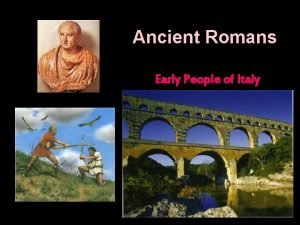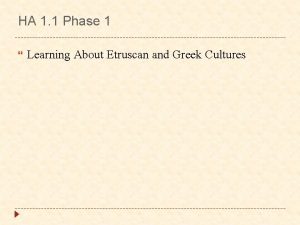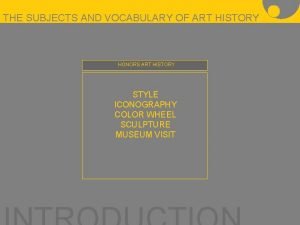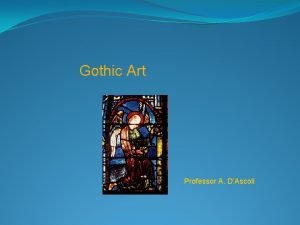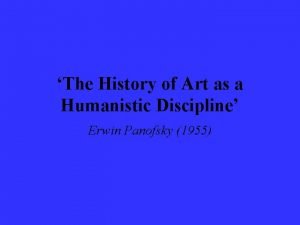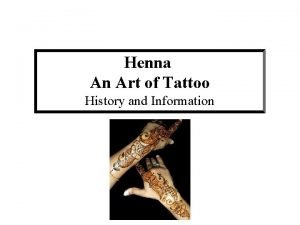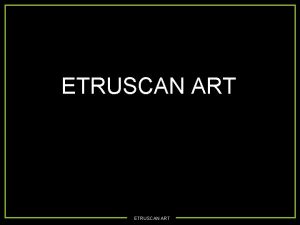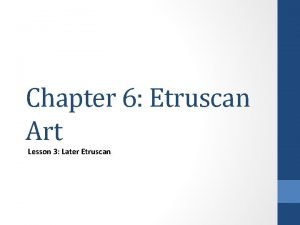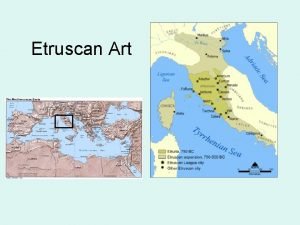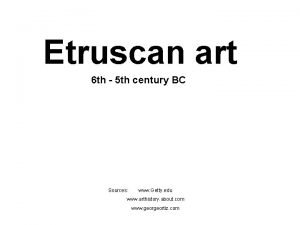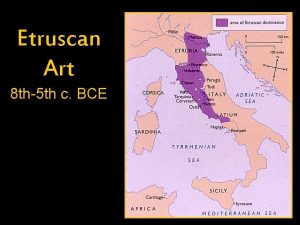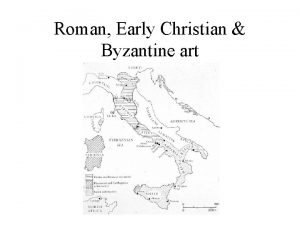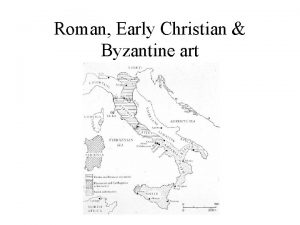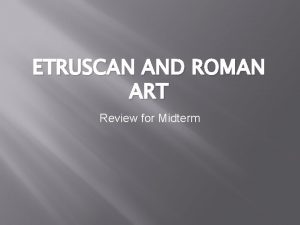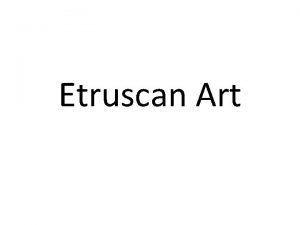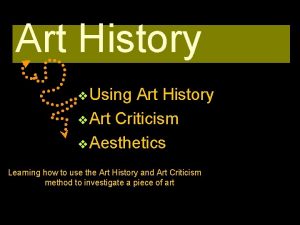Chapter 9 Etruscan Art Etruscan Art History Villanovan
















- Slides: 16

Chapter 9 Etruscan Art


Etruscan Art History Villanovan Period 9 th to 8 th century BC Comparable to Geometric period in Greece Orientalizing Phasec. 750 BC to 575 BC Etruscans reach height of power Archaic Period Mid 6 th to mid 4 th century BC Flowering of Etruscan civilization Coincides with Greek Archaic period Strong Greek influence

Pieces you will be responsible for: • Apollo from the Roof of the Portonaccio Temple (Temple of Minerva) • Sarcophagus of the Reclining Couple • Tomb of the Triclinium

Fibula with Orientalizing Lions, Regolini-Galassi Tomb, Cerveteri, Italy, 650 -640 BCE, Gold, 1. 5”

Centaur from Vulci, 590 BCE, 2”, Nenfro (volcanic rock

31. Temple of Minerva and sculpture of Apollo. Master sculptor Vulca. c. 510 -500 B. C. E. Original temple of wood, mud brick, or tufa; terra cotta sculpture

Greek vs. Etruscan Temples Similarities Gable roof General design Columns Triangular cornice Differences The Etruscan temple: Rests on tall base, or podium Narrow stairway on south side Steps lead to deep porch Columns only in front Cella divided into three zones Constructed of wood, sun-dried brick and terra-cotta



29. Sarcophagus of the Spouses. Etruscan, c. 520 bce terra cotta

32. Tomb of the Triclinium. Tarquinia, Italy. Etruscan. c. 480470 B. C. E. Tufa and fresco

Capitoline Wolf, 2’ 7”, 500 -490 BCE, Rome, Hollowcast bronze,

Chimera of Arezzo (findspot), 4 th century BCE, 2’ 7”, bronze

Sarcophagus of Lars Pulena

Compare/Contrast Egyptian influence? Greek influence?
 The etruscans lived in the area known as _____.
The etruscans lived in the area known as _____. Hercle
Hercle Etruscan mysticism
Etruscan mysticism Ap art history chapter 1
Ap art history chapter 1 History also history physical
History also history physical Art history vocabulary
Art history vocabulary History of floristry
History of floristry Gothic architecture characteristics
Gothic architecture characteristics Characteristics of early christian art
Characteristics of early christian art Art of emerging europe pdf
Art of emerging europe pdf History of art: mastery test
History of art: mastery test Byzantines floral arrangements
Byzantines floral arrangements Art as a humanistic discipline explanation
Art as a humanistic discipline explanation Henna tattoo history
Henna tattoo history The art of history taking
The art of history taking Camelid sacrum in the shape of a canine
Camelid sacrum in the shape of a canine Art history timeline
Art history timeline
